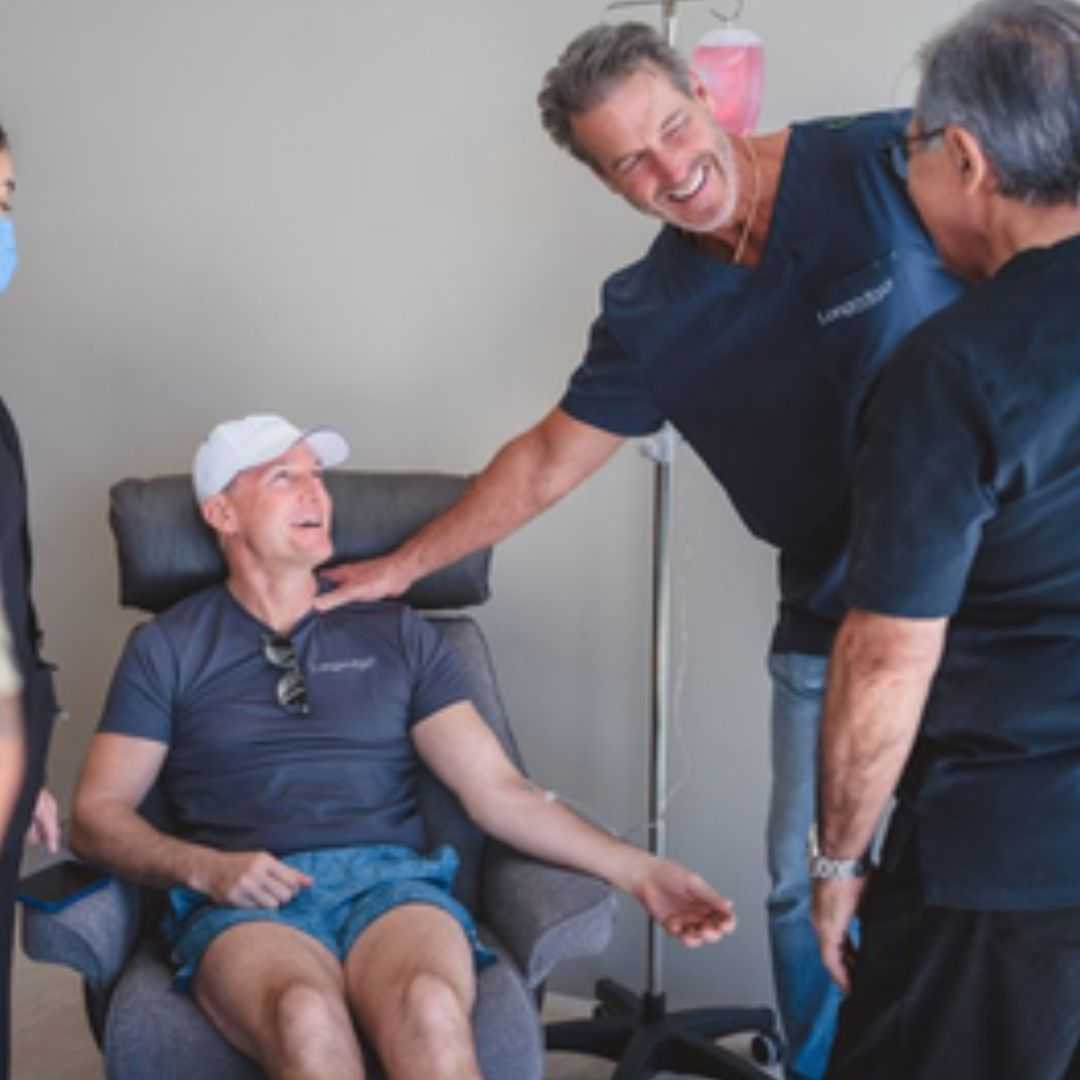Why Patients Seek Stem Cell Therapy for Plantar Fasciitis in Mexico
.jpg)
Living with plantar fasciitis can be incredibly challenging, turning everyday activities into a painful ordeal. If you've tried conventional treatments like rest, physical therapy, and anti-inflammatory medications without lasting relief, you might be looking for more advanced solutions.
This search often leads people to consider regenerative medicine, and specifically, stem cell therapy. When contemplating such innovative treatments, a common question arises: "Can stem cell therapy in Mexico treat plantar fasciitis?" The short answer is yes, many clinics in Mexico offer stem cell therapy as a promising option for those suffering from this persistent foot condition.
Mexico has emerged as a significant hub for medical tourism, particularly for regenerative treatments like stem cell therapy. Patients are often drawn to the country for high-quality care, experienced medical professionals, and more affordable costs compared to many Western nations.
For individuals struggling with chronic plantar fasciitis, exploring stem cell therapy in Mexico presents an opportunity to address the underlying tissue damage and inflammation, potentially leading to long-term pain relief and improved mobility. Let's delve deeper into how this treatment works, its effectiveness, and what you should consider.
Is stem cell therapy effective for plantar fasciitis?
For individuals with chronic plantar fasciitis that hasn't responded to traditional treatments, stem cell therapy offers a compelling alternative. This innovative approach focuses on the body's natural healing capabilities. Stem cells possess unique properties, including the ability to differentiate into various cell types and to release growth factors that aid in tissue regeneration and reduce inflammation.
When applied to plantar fasciitis, these cells target the damaged plantar fascia ligament, helping to rebuild collagen fibers and strengthen the tissue. Many patients report a significant reduction in pain and improved function following treatment, suggesting its potential effectiveness. While individual results can vary, the regenerative potential of stem cells makes them a valuable tool in addressing the root causes of chronic pain associated with this condition.
How does stem cell therapy work for plantar fasciitis?
The mechanism behind stem cell therapy for plantar fasciitis is rooted in the powerful regenerative and anti-inflammatory properties of stem cells. Once harvested and processed, these cells are precisely injected into the inflamed and degenerated plantar fascia. Upon injection, they get to work in several ways.
Firstly, stem cells release various growth factors and cytokines, which are signaling molecules that stimulate the body's own repair mechanisms. This encourages the regeneration of healthy tissue and helps to repair the micro-tears and degeneration within the plantar fascia.
Secondly, stem cells have potent anti-inflammatory effects. They can modulate the immune response, reducing the chronic inflammation that often exacerbates plantar fasciitis pain. This dual action of promoting repair and reducing inflammation makes stem cell therapy a comprehensive approach to healing the condition from within.
What types of stem cells are used for plantar fasciitis treatment in Mexico?
Clinics in Mexico typically utilize mesenchymal stem cells (MSCs) for treating plantar fasciitis, due to their well-documented regenerative and immunomodulatory capabilities. These MSCs can be sourced from a few different areas, each with its own advantages.
The most common sources include:
- Umbilical Cord Tissue: This is a popular option as umbilical cord blood and tissue are rich in young, potent MSCs. These are often considered "allogeneic" cells, meaning they come from a donor (post-birth, with parental consent), and are typically screened thoroughly for safety.
- Adipose (Fat) Tissue: Adipose-derived stem cells (ADSCs) are harvested from the patient's own fat through a mini-liposuction procedure. This is an "autologous" source, meaning the cells come from the patient's own body, reducing the risk of rejection.
- Bone Marrow: Bone marrow aspirate concentrate (BMAC) is another autologous source, where stem cells are extracted from the patient's bone marrow, usually from the hip bone.
The choice of stem cell source can depend on the clinic's protocols, the patient's health, and specific needs, with many clinics favoring umbilical cord-derived MSCs for their high purity and concentration.
What is the typical cost of stem cell therapy for plantar fasciitis in Mexico?
One of the primary reasons many individuals consider medical tourism, especially for advanced treatments like stem cell therapy, is the significant cost difference. In Mexico, the cost of stem cell therapy for plantar fasciitis is often considerably lower than in countries like the United States or Canada, without compromising on quality.
While prices can vary, patients can generally expect to pay between $3,000 and $8,000 for a single treatment. This range accounts for factors such as:
- The specific clinic and its reputation.
- The type and quantity of stem cells used (e.g., umbilical cord, adipose, bone marrow).
- The number of injections or treatment sessions required.
- Included services like consultations, follow-ups, and diagnostic imaging.
It's important for prospective patients to obtain a detailed quote from their chosen clinic, ensuring clarity on what is included in the price. Despite the variation, the overall affordability often makes Mexico an attractive option for those seeking effective plantar fasciitis treatment.
What are the benefits of choosing Mexico for stem cell therapy for plantar fasciitis?
Mexico has solidified its reputation as a leading destination for medical tourism, particularly in the field of regenerative medicine. For patients considering stem cell therapy for plantar fasciitis, several advantages make Mexico an appealing choice.
Key benefits include:
- Cost-Effectiveness: As mentioned, the cost of treatments in Mexico can be a fraction of what they are in other countries, making advanced therapies more accessible.
- Advanced Medical Facilities: Many clinics in major Mexican cities are equipped with state-of-the-art technology and adhere to international standards of care.
- Experienced Specialists: Mexico boasts a growing number of highly trained and internationally recognized doctors specializing in regenerative medicine and orthopedics.
- Accessibility: For patients in North America, Mexico is geographically convenient, with numerous direct flights and accessible border crossings.
- Innovative Treatments: Mexico often has more progressive regulations regarding stem cell therapies, allowing for a broader range of innovative treatments compared to some other countries.
These factors combine to create a compelling case for choosing Mexico when seeking advanced solutions for chronic conditions like plantar fasciitis.
Is stem cell therapy for plantar fasciitis safe in Mexico?
The safety of any medical procedure is paramount, and stem cell therapy is no exception. When considering treatment in Mexico, it's natural to have questions about safety and regulation. Reputable clinics in Mexico prioritize patient safety by following stringent protocols for cell processing, administration, and patient care.
Factors contributing to safety include:
- Accreditation and Licensing: Look for clinics that are accredited by national or international bodies, ensuring they meet high standards.
- Sterile Environments: Treatments should be performed in sterile, clinical settings to minimize the risk of infection.
- Qualified Professionals: Ensure the medical team, including doctors and technicians, are board-certified and experienced in regenerative medicine.
- Source of Stem Cells: Responsible clinics will provide transparent information about the source of their stem cells and their screening processes.
While no medical procedure is entirely risk-free, choosing a well-established and ethical clinic significantly mitigates potential concerns, making stem cell therapy for plantar fasciitis in Mexico a safe option for many.
What is the recovery time after stem cell therapy for plantar fasciitis?
The recovery process after stem cell therapy for plantar fasciitis is generally straightforward, but it requires patience as the regenerative process unfolds. Immediately after the injection, patients might experience some mild soreness or bruising at the injection site, which usually subsides within a few days. Doctors typically recommend a period of rest, often avoiding strenuous activities or prolonged standing for the first 24-72 hours.
Following this initial rest, a gradual return to normal activities is advised. Physical therapy may be recommended to support the healing process and strengthen the foot and ankle. The full benefits of stem cell therapy are not immediate; it takes time for the cells to integrate and for tissue regeneration to occur. Patients often begin to notice significant pain reduction and functional improvement within 4-12 weeks, with continued progress over several months. Adhering to post-treatment guidelines is crucial for optimal outcomes.
Who is a good candidate for stem cell therapy for plantar fasciitis?
Not everyone suffering from plantar fasciitis is an ideal candidate for stem cell therapy. The best candidates are typically individuals who have experienced chronic plantar fasciitis symptoms for an extended period, usually six months or more, and have not found adequate relief from conservative treatments. These conservative treatments often include:
- Rest and ice application.
- Over-the-counter pain relievers.
- Physical therapy and stretching exercises.
- Custom orthotics or supportive footwear.
- Corticosteroid injections (though repeated injections can weaken tissue).
Additionally, good candidates should be in overall good health, without active infections, certain autoimmune disorders, or specific blood conditions that could interfere with the therapy. A thorough medical evaluation and consultation with a stem cell specialist in Mexico are essential to determine if this advanced treatment is appropriate for your specific condition.
What alternatives to stem cell therapy exist for plantar fasciitis?
While stem cell therapy offers a cutting-edge approach, it's important to remember that a range of treatment alternatives exist for plantar fasciitis. These options typically vary in invasiveness and mechanism of action, addressing different stages and severities of the condition. Most people start with conservative treatments before exploring more advanced options.
Common alternatives include:
- Conservative Management: This forms the cornerstone of initial treatment and includes physical therapy, stretching exercises, custom orthotics, night splints, rest, ice, and over-the-counter pain relievers.
- Platelet-Rich Plasma (PRP) Injections: Similar to stem cells in its regenerative focus, PRP therapy uses a concentration of the patient's own platelets to deliver growth factors and promote healing.
- Corticosteroid Injections: These can provide temporary pain relief by reducing inflammation, but are not a long-term solution and repeated use can weaken tissue.
- Extracorporeal Shockwave Therapy (ESWT): This non-invasive treatment uses sound waves to stimulate healing in the plantar fascia.
- Surgery: For a small percentage of patients (typically less than 5%) who do not respond to any other treatment, surgical release of the plantar fascia may be considered as a last resort.
Discussing all available options with a medical professional is crucial to choosing the most appropriate path for your individual needs.
How do I choose a reputable clinic for stem cell therapy in Mexico?
Selecting the right clinic for stem cell therapy in Mexico is a critical step in ensuring both safety and the best possible outcome for your plantar fasciitis treatment. With the growing popularity of medical tourism, due diligence is essential. Here are key factors to consider when evaluating clinics:
- Accreditation and Certification: Verify that the clinic is recognized by relevant medical authorities and, if possible, holds international accreditations. This signifies adherence to high standards of care.
- Doctor's Credentials and Experience: Research the doctors who will be performing the procedure. Ensure they are board-certified, have specialized training in regenerative medicine, and possess significant experience in treating plantar fasciitis with stem cells.
- Transparency in Protocols: A reputable clinic will be open about its stem cell sources (e.g., umbilical cord, adipose, bone marrow), processing methods, and treatment protocols. They should also clearly explain the scientific basis for their therapies.
- Patient Testimonials and Reviews: Look for genuine patient reviews and success stories. While individual results vary, consistent positive feedback can be a good indicator of quality care.
- Comprehensive Consultations: A good clinic will offer a thorough initial consultation, including a review of your medical history and diagnostic imaging, to determine if you are a suitable candidate.
- Clear Pricing and Inclusions: Ensure you receive a detailed breakdown of costs, so you understand exactly what is included in the treatment package and avoid hidden fees.
By carefully evaluating these aspects, you can confidently choose a reputable clinic in Mexico for your stem cell therapy for plantar fasciitis.
If you are exploring advanced solutions for your health concerns or considering medical tourism for quality, affordable care, PlacidWay can guide you through the process. We connect patients with world-class clinics and specialized treatments globally, helping you find the right path to wellness.


.png)














Share this listing